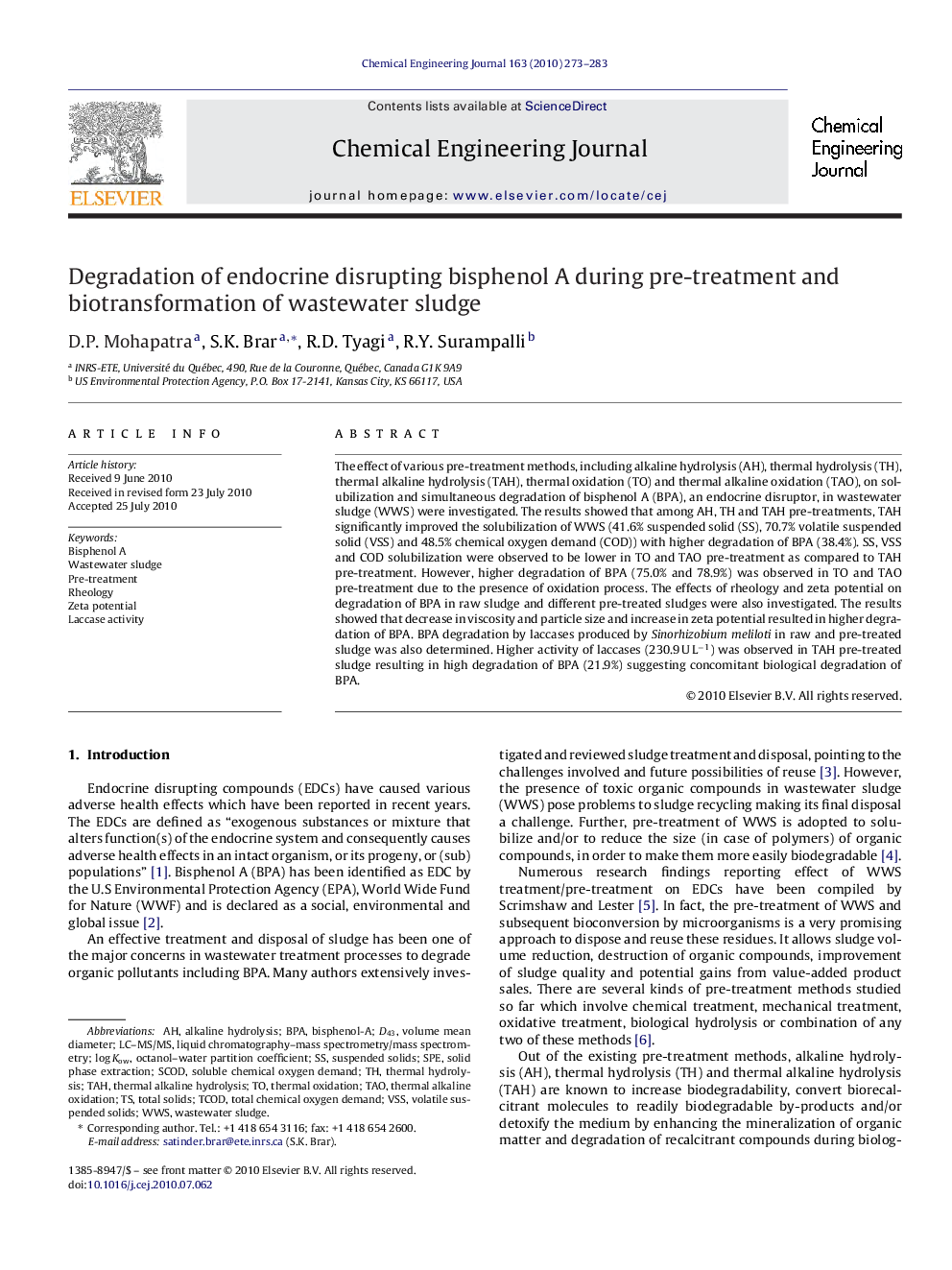| Article ID | Journal | Published Year | Pages | File Type |
|---|---|---|---|---|
| 151967 | Chemical Engineering Journal | 2010 | 11 Pages |
The effect of various pre-treatment methods, including alkaline hydrolysis (AH), thermal hydrolysis (TH), thermal alkaline hydrolysis (TAH), thermal oxidation (TO) and thermal alkaline oxidation (TAO), on solubilization and simultaneous degradation of bisphenol A (BPA), an endocrine disruptor, in wastewater sludge (WWS) were investigated. The results showed that among AH, TH and TAH pre-treatments, TAH significantly improved the solubilization of WWS (41.6% suspended solid (SS), 70.7% volatile suspended solid (VSS) and 48.5% chemical oxygen demand (COD)) with higher degradation of BPA (38.4%). SS, VSS and COD solubilization were observed to be lower in TO and TAO pre-treatment as compared to TAH pre-treatment. However, higher degradation of BPA (75.0% and 78.9%) was observed in TO and TAO pre-treatment due to the presence of oxidation process. The effects of rheology and zeta potential on degradation of BPA in raw sludge and different pre-treated sludges were also investigated. The results showed that decrease in viscosity and particle size and increase in zeta potential resulted in higher degradation of BPA. BPA degradation by laccases produced by Sinorhizobium meliloti in raw and pre-treated sludge was also determined. Higher activity of laccases (230.9 U L−1) was observed in TAH pre-treated sludge resulting in high degradation of BPA (21.9%) suggesting concomitant biological degradation of BPA.
